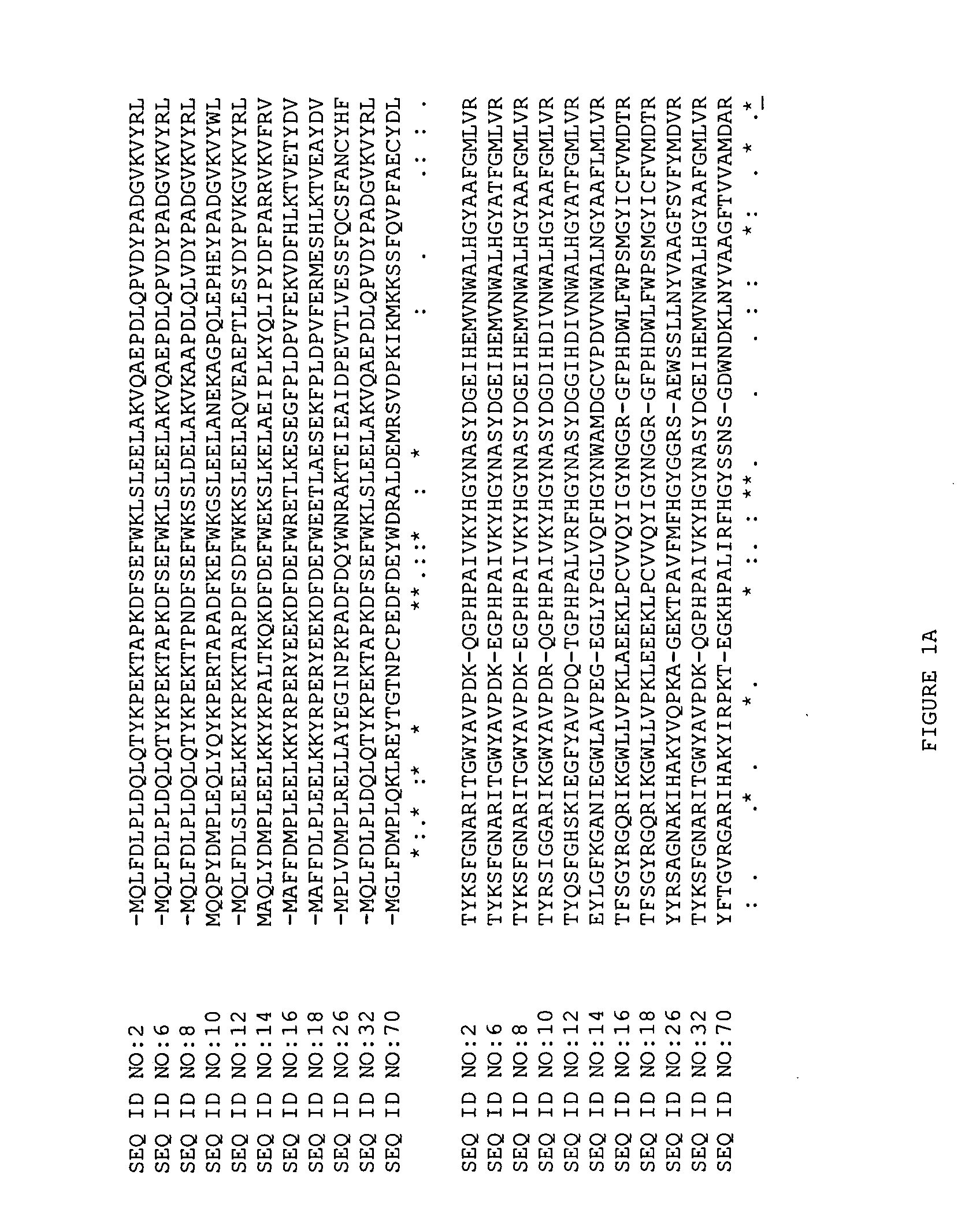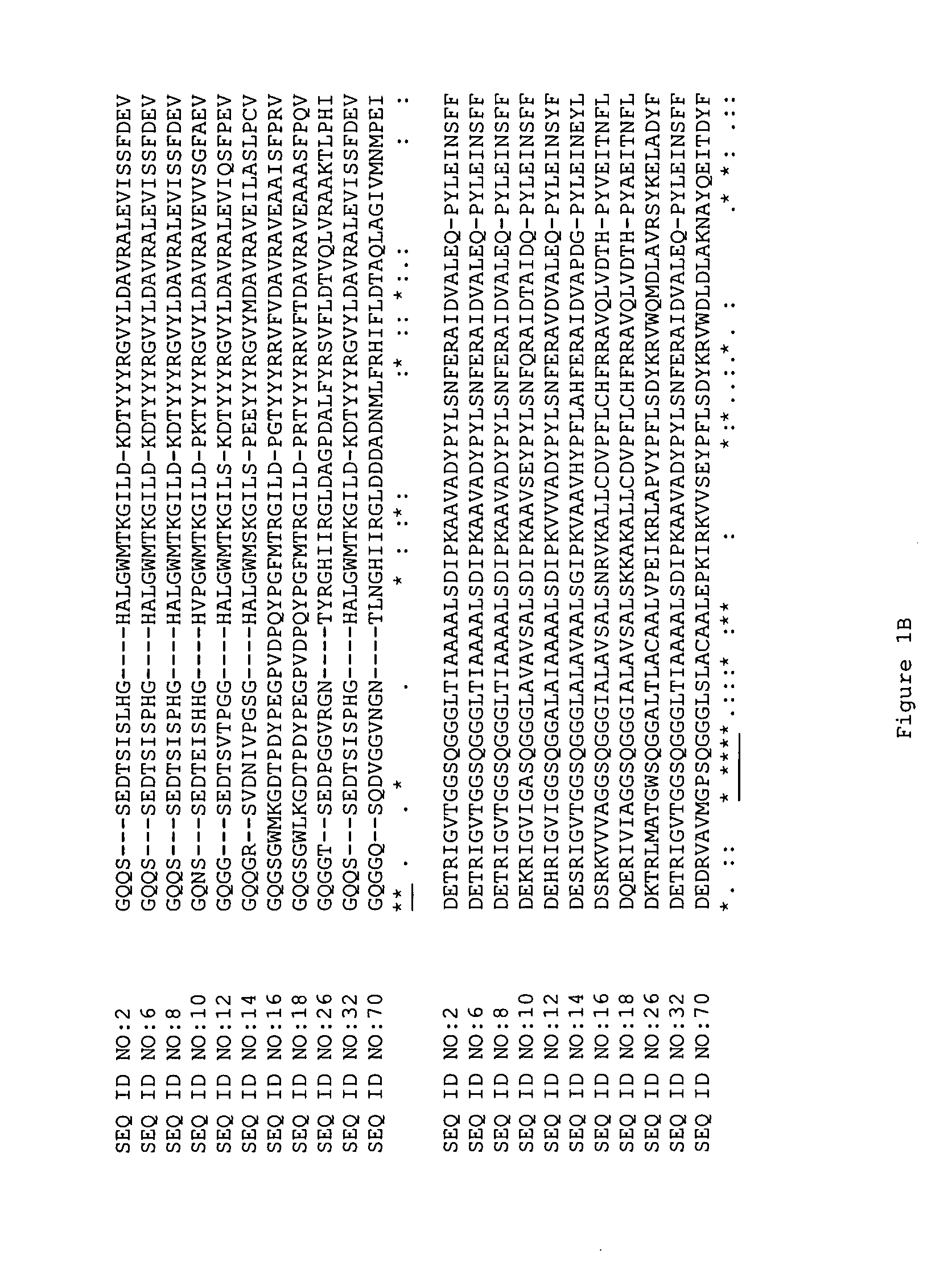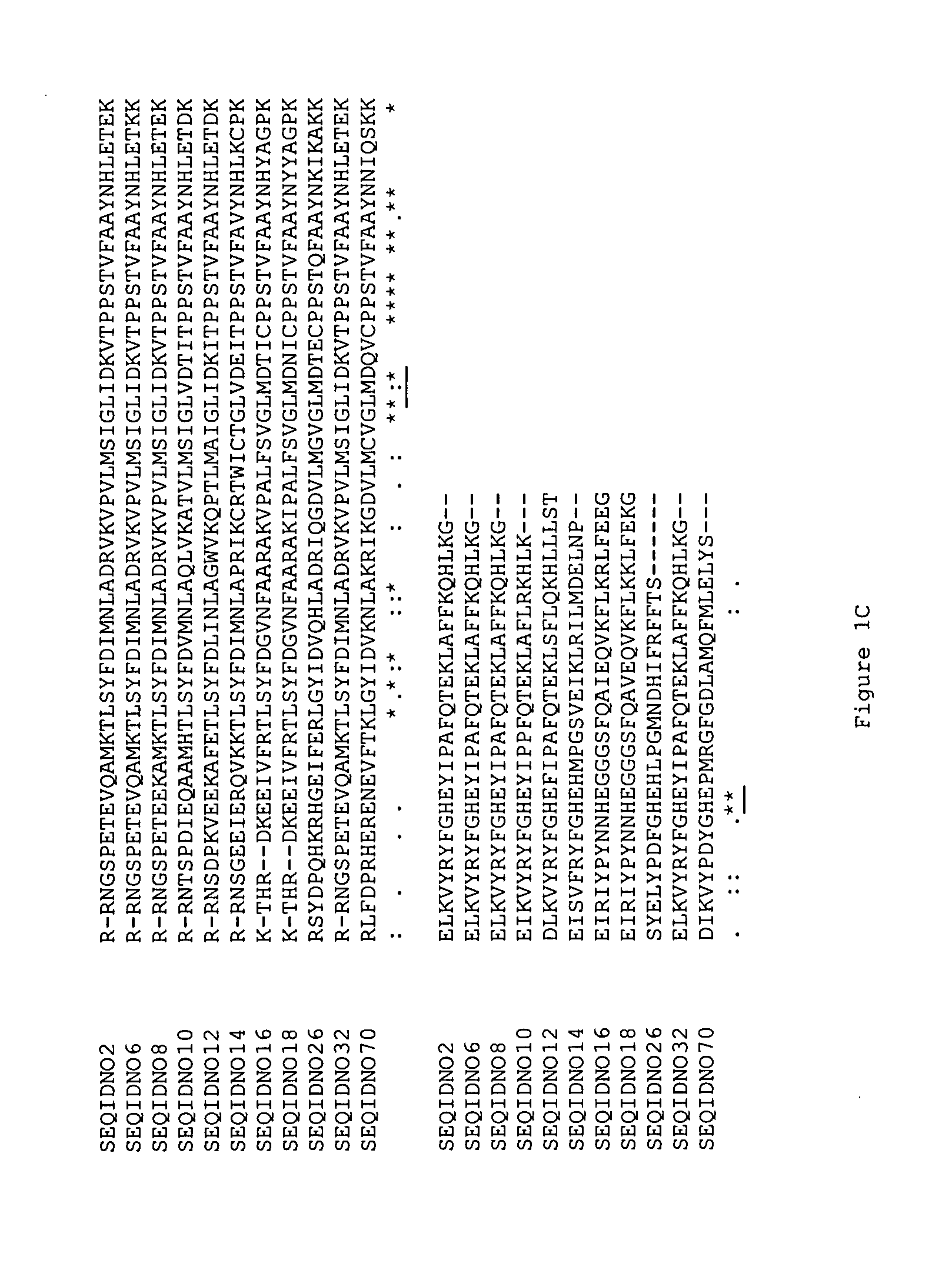Production of peracids using an enzyme having perhydrolysis activity
a technology of peracid and enzyme, applied in the field of peracid biosynthesis and in situ enzyme catalysis, can solve the problems of low efficiency of peracid aqueous system, and low concentration of peracid in solution, etc., and achieve the effect of efficiency
- Summary
- Abstract
- Description
- Claims
- Application Information
AI Technical Summary
Benefits of technology
Problems solved by technology
Method used
Image
Examples
example 1
Growth of Bacillus subtilis ATCC 31954™ and Preparation of Cell Extract
[0285]A culture of Bacillus subtilis (ATCC 31954™) was revived following suspension of the dried culture in 5 mL of nutrient broth (DIFCO; 0003-01-6) and incubation for 3 days at 30° C. Following the third day of incubation, an aliquot of the culture was streaked onto a trypticase soy agar culture plate (Becton, Dickinson, and Company; Franklin Lakes, N.J.) and incubated at 35° C. for 24 h. Several single colonies were scraped onto a 1 microliter inoculation loop (Becton Dickinson; catalog #220215) and transferred into 50 mL of Lactobacillus MRS broth (Hardy Diagnostics, Santa Maria, Calif.; catalog #C5931). The culture was then grown at 30° C. and a 200-rpm agitation rate for 12 h. After 12 h of growth, 2 mL of the culture was transferred into an unbaffled 500-mL shake flask containing 100 mL of MRS broth for growth at 30° C. and 200-rpm agitation for 12-14 h. The cells were subsequently harvested by centrifugat...
example 2
Determination of Perhydrolysis Activity of Bacillus subtilis ATCC 31954™ Semi-Purified Cell Extract
[0287]A 1.0-mL aliquot of Bacillus subtilis (ATCC 31954™) cell extract (10 mg total protein / mL, prepared as described in Example 1) was diluted with an equal volume of 50 mM phosphate buffer (pH 7.0) and filtered through a 100,000 Molecular Weight Cutoff (MWCO) Centricon membrane unit (Millipore Corp, Bedford, Mass.). The resulting filtrate (semi-purified cell extract) contained 1.5 mg total protein / mL assayed for total soluble protein (Bicinchoninic Acid Kit for Protein Determination, Sigma catalog #BCA1-KT), and an assay of this filtrate indicated no measurable catalase activity.
[0288]A 1-mL reaction mixture containing triacetin (250 mM), hydrogen peroxide (2.5 M) and 0.100 mL of semi-purified cell extract (0.15 mg extract total protein) in 50 mM phosphate buffer (pH 6.5) was mixed at 25° C. A control reaction was run by substituting 50 mM phosphate buffer (pH 6.5) for semi-purified ...
example 3
Perhydrolysis Activity of Semi-Purified Enzyme from Bacillus subtilis ATCC 31954™ Cell Extract
[0291]Bacillus subtilis ATCC 31954™ growth and extract preparation was performed as described in Example 1, except that the crude extract was not centrifuged. The crude extract was fractionated with cold n-propanol (−20° C.). A flask containing the cell-free extract was stirred in an ice bath for 15 min, then the n-propanol (−20° C.) was added drop-wise (to prevent freezing of the extract) to a concentration of 40% (v / v). The resulting extract / propanol mixture was stirred in the ice bath for 30 min, then centrifuged at 12,000×g for 10 min at 5° C., and the supernatant returned to the flask and placed into the ice bath. Additional n-propanol (−20° C.) was slowly added to the supernatant with stirring to a concentration of 60% (v / v), and the resulting mixture stirred for 30 min in the ice bath and then centrifuged as before. The pellet from this second fraction was saved on ice and the supern...
PUM
| Property | Measurement | Unit |
|---|---|---|
| solubility | aaaaa | aaaaa |
| carboxylic acid | aaaaa | aaaaa |
| concentration | aaaaa | aaaaa |
Abstract
Description
Claims
Application Information
 Login to View More
Login to View More - R&D
- Intellectual Property
- Life Sciences
- Materials
- Tech Scout
- Unparalleled Data Quality
- Higher Quality Content
- 60% Fewer Hallucinations
Browse by: Latest US Patents, China's latest patents, Technical Efficacy Thesaurus, Application Domain, Technology Topic, Popular Technical Reports.
© 2025 PatSnap. All rights reserved.Legal|Privacy policy|Modern Slavery Act Transparency Statement|Sitemap|About US| Contact US: help@patsnap.com



